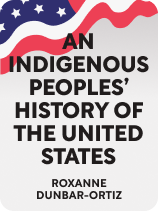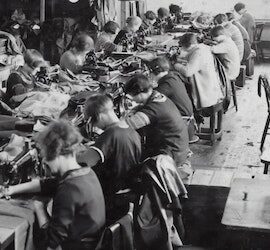

This article is an excerpt from the Shortform book guide to "An Indigenous Peoples' History of the United States" by Roxanne Dunbar-Ortiz. Shortform has the world's best summaries and analyses of books you should be reading.
Like this article? Sign up for a free trial here.
What did indigenous resistance look like? How did Native Americans resist colonization?
Indigenous resistance against colonizing forces included guerrilla warfare, which meant setting fire to settlements, taking hostages, and killing settlers. Others chose to assimilate with the Europeans instead of participating in warfare, but this did not always spare them from European violence.
Here’s more on how indigenous people resisted colonization in the Americas.
Indigenous Resistance Against Colonization
In An Indigenous Peoples’ History of the United States, author Roxanne Dunbar-Ortiz says that indigenous Americans weren’t prepared for the total war tactics European settlers employed because their war traditions were vastly different. Native Americans tended to engage in ritual warfare, which is a show of bravery and honor intended to resolve conflicts with few deaths, rather than an opportunity to exterminate one’s enemies. Indigenous resistance developed in new ways out of necessity.
(Shortform note: In North American Indigenous Warfare and Ritual Violence, other scholars provide additional context about indigenous American ways of war. While Dunbar-Ortiz says that most Native American conflicts could be described as ritual warfare, these scholars argue that this was just one type of conflict that occurred between warring Native Americans. In other cases, Native American factions battled over land, resources, and other political matters, which sometimes resulted in mass casualties, contrary to Dunbar-Ortiz’s assertion that they were relatively nonviolent. The editors of this volume argue that overstating Native Americans’ peacefulness is pro-colonial since it’s based on a Eurocentric misunderstanding of their history.)
Nevertheless, many indigenous peoples used guerrilla warfare against the colonizers, which Dunbar-Ortiz says involves stealthy operations that quickly disable the enemy followed by a retreat. They also burned settlers’ communities, took settlers as hostages, and killed settlers in an effort to scare colonizers away and restore their claims to their lands.
(Shortform note: Experts note that because they engaged in violent resistance, Native Americans are often stereotyped as being barbaric and gratuitously violent (while Europeans and their descendants are often stereotyped as being innocent, civilized, and peaceful). However, according to the controversial Algerian anti-colonialist thinker Frantz Fanon, colonization always necessitates and pre-justifies violent resistance. In his book The Wretched of the Earth, Fanon argued that anti-colonial violence serves three purposes: fending off the colonizer (and the dangers he brings with him), psychologically healing and liberating the colonized, and making space for the creation of a new, postcolonial society.)
Native peoples won some battles against the settlers, but the settlers typically responded by escalating the violence and attempting to wipe out entire communities. As a result, some indigenous nations were coerced to ally with settlers against other indigenous nations during battles, including the French and Indian War. Some indigenous nations also converted to Christianity and submitted to the settlers’ rule because they viewed assimilation more positively than annihilation. However, Dunbar-Ortiz explains that this didn’t always keep them safe—for example, during the American Revolutionary War, Pennsylvanian settlers massacred an entire village—including 34 children—of the Delaware Nation who were Moravian Christians.
| Indigenous Survival Strategies During the Colonial Wars Dunbar-Ortiz notes two survival strategies some indigenous nations used during the colonial period: forming alliances with settlers and converting to settlers’ religion. Other experts note that both strategies became particularly important during the French and Indian War (a territorial dispute between the French and British in the American colonies from 1754 to 1763). During this time, most native nations living in the war zone allied with the French because they had more peaceable relations with the French and had been converted to Christianity by French missionaries. A few other nations sided with the British, who won the war and imposed military rule over those who’d sided with the French. The American Revolutionary War, which was fought over settlers’ desire for independence from Britain, also proved deadly for Native Americans. The war embroiled Native Americans in battle, with some nations allying with the British and others with American separatists, and it brought about a smallpox epidemic that decimated native populations. Some indigenous peoples attempted a third survival strategy: wartime neutrality. The Delaware converts to Moravian Christianity (a Protestant sect) whom Dunbar-Ortiz mentions took this approach because their religion advocated pacifism. However, as Dunbar-Ortiz explains, this approach backfired: Settlers’ distrust of them led to their murder during the Gnadenhutten Massacre. |

———End of Preview———
Like what you just read? Read the rest of the world's best book summary and analysis of Roxanne Dunbar-Ortiz's "An Indigenous Peoples' History of the United States" at Shortform.
Here's what you'll find in our full An Indigenous Peoples' History of the United States summary:
- A retelling of US history from a Native American perspective
- What led Europe to colonize the Americas
- How patterns of genocide and resistance have played out over the course of US history






